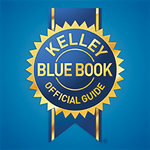![]()

ARLINGTON, Va. — The Insurance Institute for Highway Safety is applying more stringent criteria to its list of recommended used vehicles for teens, as recent safety improvements have percolated down to lower cost used cars, SUVs, minivans and pickups.
Teenagers are among the riskiest drivers, but they often end up with inexpensive vehicles that don’t offer adequate protection in a crash. To help families find safer vehicles that fit within their budgets, IIHS began publishing a list of recommended used vehicles for teens in 2014.
The latest update includes 49 “best choices,” starting under $20,000, and 82 “good choices,” starting under $10,000.
For the first time this year, small overlap front crash protection has been factored in for the best choices section of the list. And the bar has been raised for the less expensive good choices as well, with better side and head restraint ratings required.
“Just as we are always updating the criteria for our awards for new vehicles, TOP SAFETY PICK and TOP SAFETY PICK+, we can now point used vehicle buyers toward even safer models than before,” says David Zuby, IIHS executive vice president and chief research officer. “Good crash protection is more affordable than ever, so there’s no need to skimp on safety when it comes to a vehicle for a young driver.”
Prices for listed vehicles are provided by Kelley Blue Book, based on estimates for a private party purchase near the Institute’s Arlington, Va., headquarters.
“Choosing a safe vehicle for your teen is of paramount importance, and settling on a vehicle your family can afford is also very important,” says Jack Nerad, executive editorial director and executive market analyst for Kelley Blue Book.
“Kelley Blue Book provides you with updated vehicle prices and values that are unique to your area, so KBB.com is a great site to visit as you finalize your buying decision.”
 Both lists follow a few basic principles which should always be taken into account when shopping for a vehicle for a teenager:
Both lists follow a few basic principles which should always be taken into account when shopping for a vehicle for a teenager:
Beyond those basics, parents should seek out a vehicle with the highest crash test ratings they can afford.
Models on this year’s good choices list earn good ratings in the Institute’s moderate overlap front, side and head restraint tests. Vehicles on the best choices list must also have a good rating for roof strength to protect in rollover crashes and a good or acceptable rating in the small overlap test. This replicates what happens when the front, driver side corner of a vehicle strikes another vehicle or an object such as a tree or utility pole.
If rated by the National Highway Traffic Safety Administration (NHTSA), vehicles on either list must earn 4 or 5 stars overall or 4 or 5 stars in the front and side tests under NHTSA’s old rating scheme which was used through the 2010 model year.
Before purchasing a used vehicle, it’s critical to check for outstanding recalls. You can enter the Vehicle Identification Number at nhtsa.gov/recalls. It’s also a good idea to notify the manufacturer once you purchase the vehicle, so the company can make sure you receive future recall notices.
Consumers should keep in mind that the ongoing recall of Takata airbags affects a large number of vehicles. Since the risk of airbag malfunction increases over time and also depends on the climate where the vehicle is kept for most of the year, not all affected vehicles have been recalled yet. NHTSA recommends checking its recall page every six months or so.
In recent years, front crash prevention has been part of the criteria for IIHS safety awards for new vehicles. Although such systems are likely to be valuable for inexperienced drivers, they are usually available only as optional equipment making it difficult to locate a used vehicle that has the feature.
The same goes for good or acceptable rated headlights. IIHS began headlight ratings last year, but many vehicles have multiple headlight systems with varying ratings.
Parents of children who are still years away from driving should plan ahead if they want their future driver to benefit from front crash prevention and good rated headlights.
If possible, when buying the next family vehicle, choose an IIHS TOP SAFETY PICK or TOP SAFETY PICK+ with at least 4 or 5 stars from NHTSA, and consider handing it down to your teenager when the time comes.
Choosing the best vehicle for your teen
http://www.iihs.org/iihs/ratings/vehicles-for-teens